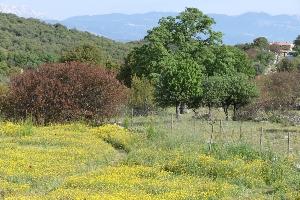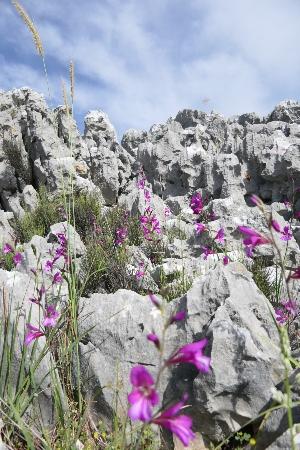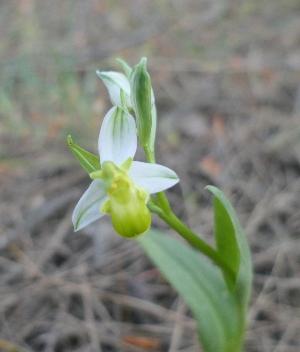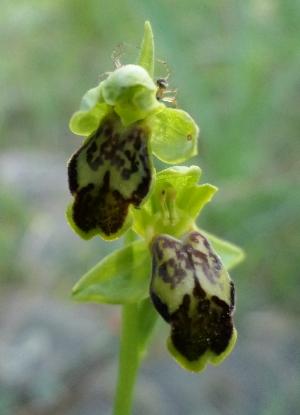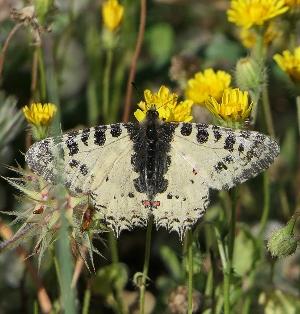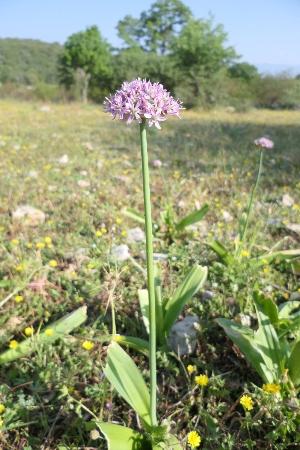News
More on the Spring in Southwest Turkey
23rd Apr 2020
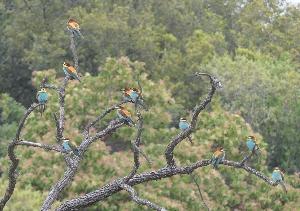
A marvellous morning with groups of Golden Orioles dropping out of the sky like ripe citrus fruits! Must have been thirty or forty in groups of half a dozen. Devilishly difficult to photograph though as they are quite shy and fly off quickly… Groups of Bee-eaters going over as well. For three months in the spring honey men are everywhere in the countryside around Kas, every half a kilometre in the hills around us is a collection of hives and the oak trees and banks of flowers are literally humming with activity. Of course the bee-eaters can’t resist and hang around the hives. The nearest are just below our garden and sometimes there’s twenty or more bee-eaters in the trees swooping down on the insects. It doesn’t always end happily for them as the bee men shoot them, but they seem to know that this bee man turns up around 09.30 most days and are gone by the time he arrives. This morning there was a lovely male Collared Flycatcher in the trees with the Orioles as well as Orphean Warblers and Olivaceous Warblers. A fine Lanner Falcon flew over, the third time this week, and I saw it circling by some cliffs a couple of kilometres away when I was cycling and wonder if it might breed there this year.
Snakes are starting to appear. A Montpellier Snake writhed through the flowers at the bottom of the garden and Whip Snakes have been seen moving with characteristic rapidity. This morning a Weasel bounded through the rockery nearest the house.
Flowers are changing rapidly now with the great clubbed flowers of Allium nigrum coming into bloom and white Allium hirsutum and purple Allium junceum all over the limestone rocks. Legousias, Campanulas, Parentucellias and Adonis are all in bloom and the Poppies are just sensational. The Bellevalias have finished but it looks the same as there’s now even more Muscari comosum, though little Zoe (two tomorrow!) calls them all Bellevalias. We haven’t yet showed her how to tell them apart. She’s learning about buds and fruit and growing and spends time showing us which are the poppy buds and which are the seed capsules. Gladiolus – both illyricus and italicum – are everywhere. They look like arable and natural populations of the same species to me! There’s plenty of orchids around still with highlights being lots of Ophrys lyciensis and a very late-flowering and large-flowered ‘fusca’ type that was called Ophrys phaseliana. Serapias are in bloom and so too the Violet Limodores. Not far outside the garden there was a group of a hundred limodores growing up under a single old oak tree and I was looking forward to bringing you photos of the spectacle but alas, just as they were about to bloom, along came the goats (or sheep) and nibbled them all off! The difference between grazed and ungrazed land here is stark at the moment – there’s a picture I’ve put up with this article with the area to the left of the fence in the garden and ungrazed, and to the right outside and grazed, a very different scene! Even though there’s a lockdown here for parts of each week the goats have to graze and shepherds accompany them, of course it’s fairly easy to keep social distancing rules if you are a shepherd! In a couple of weeks many of the local shepherds will take their animals high up onto the big snowy mountain we can see – I wonder whether that will happen this year?
Back to the birds for a minute. There was a Cuckoo sitting on the bird table (that’s definitely a first!) when we woke up the other morning. An odd sight. Pied Flycatchers have been passing through in low numbers all week, a female Red-backed Shrike last week was the only one of the spring. The Short-toed Eagles are back on territory in the valley below us and occasionally they drift over, two were displaying yesterday, flying around each in tight slow circles with their legs dangling.
